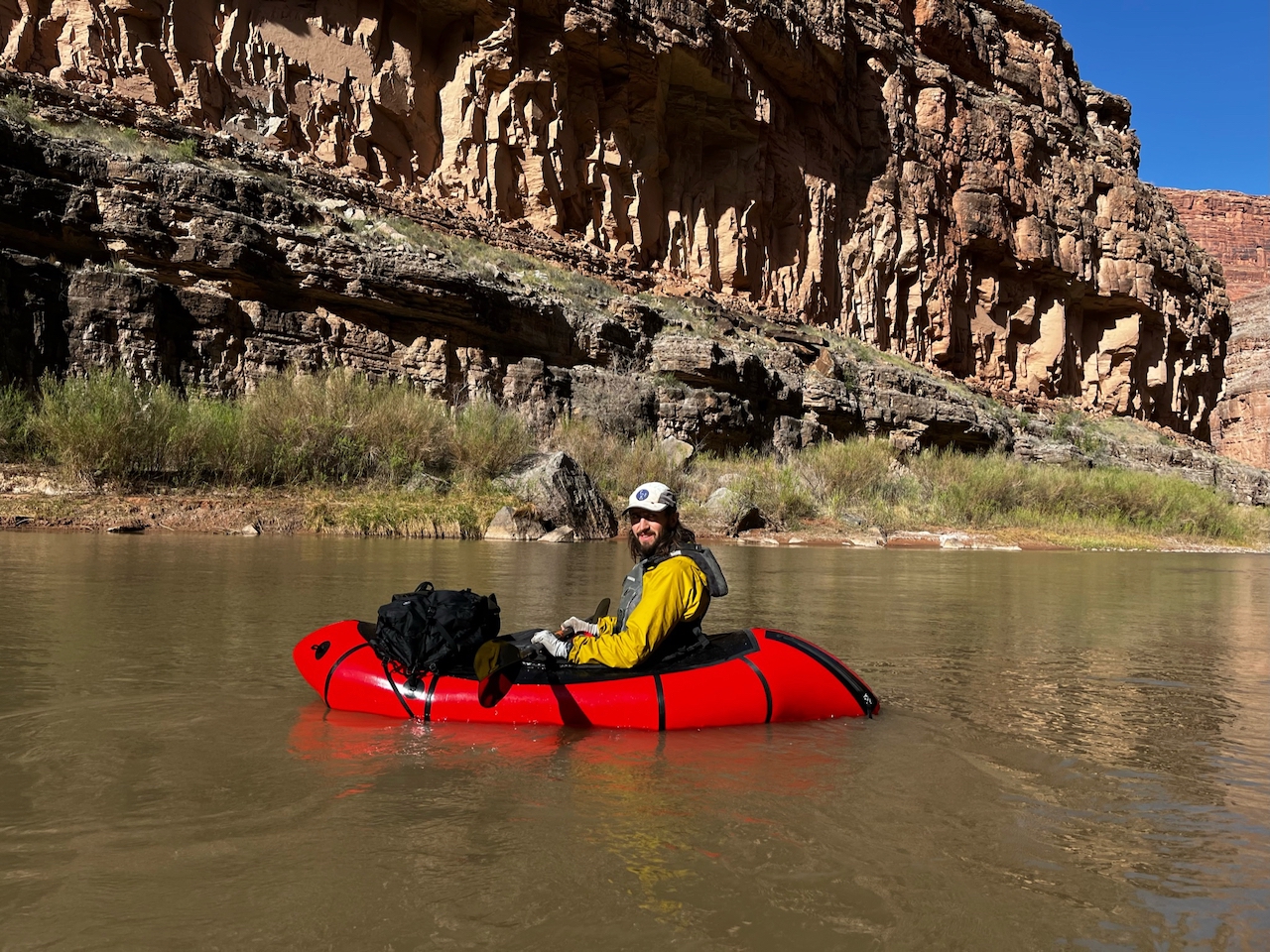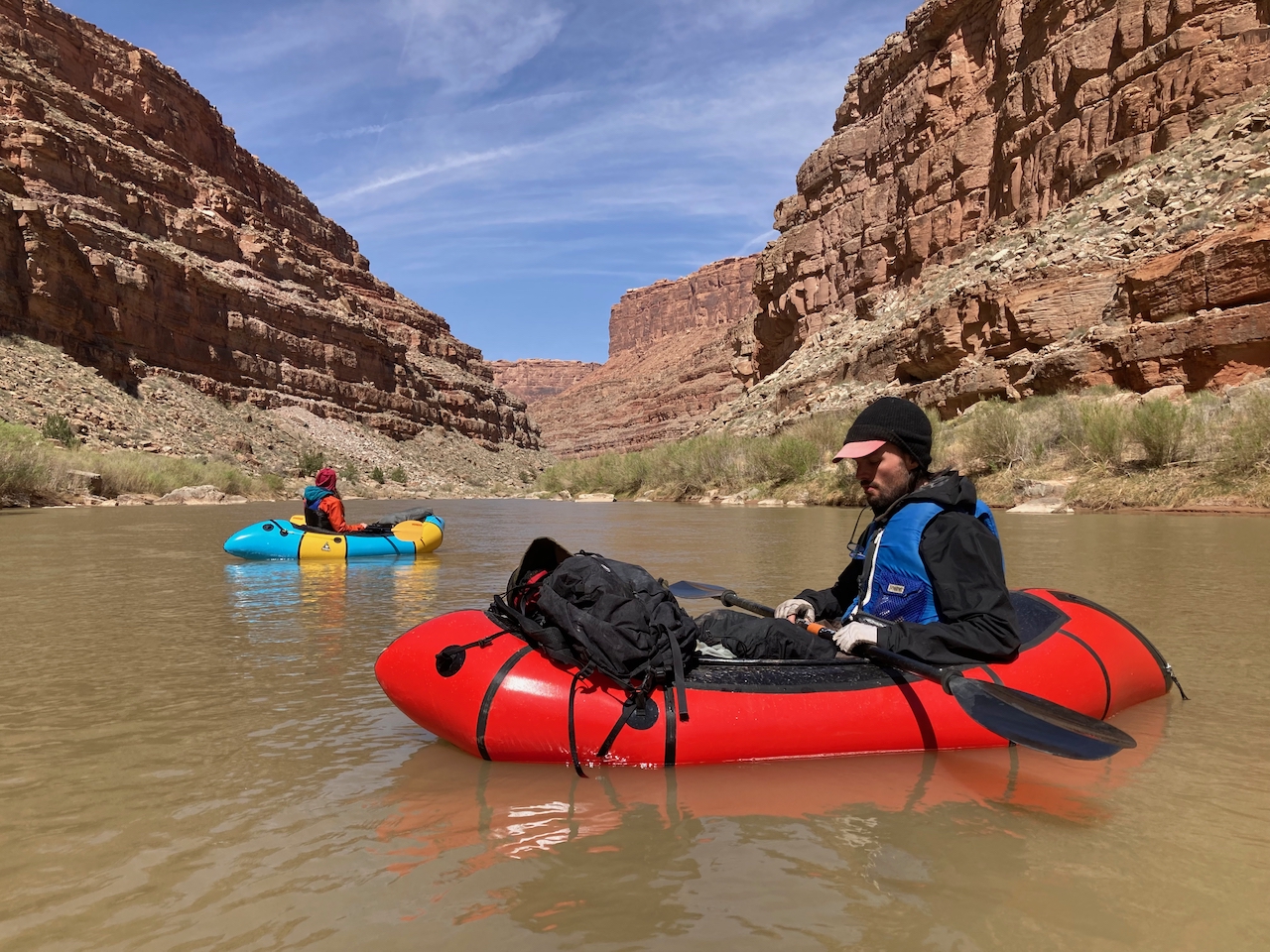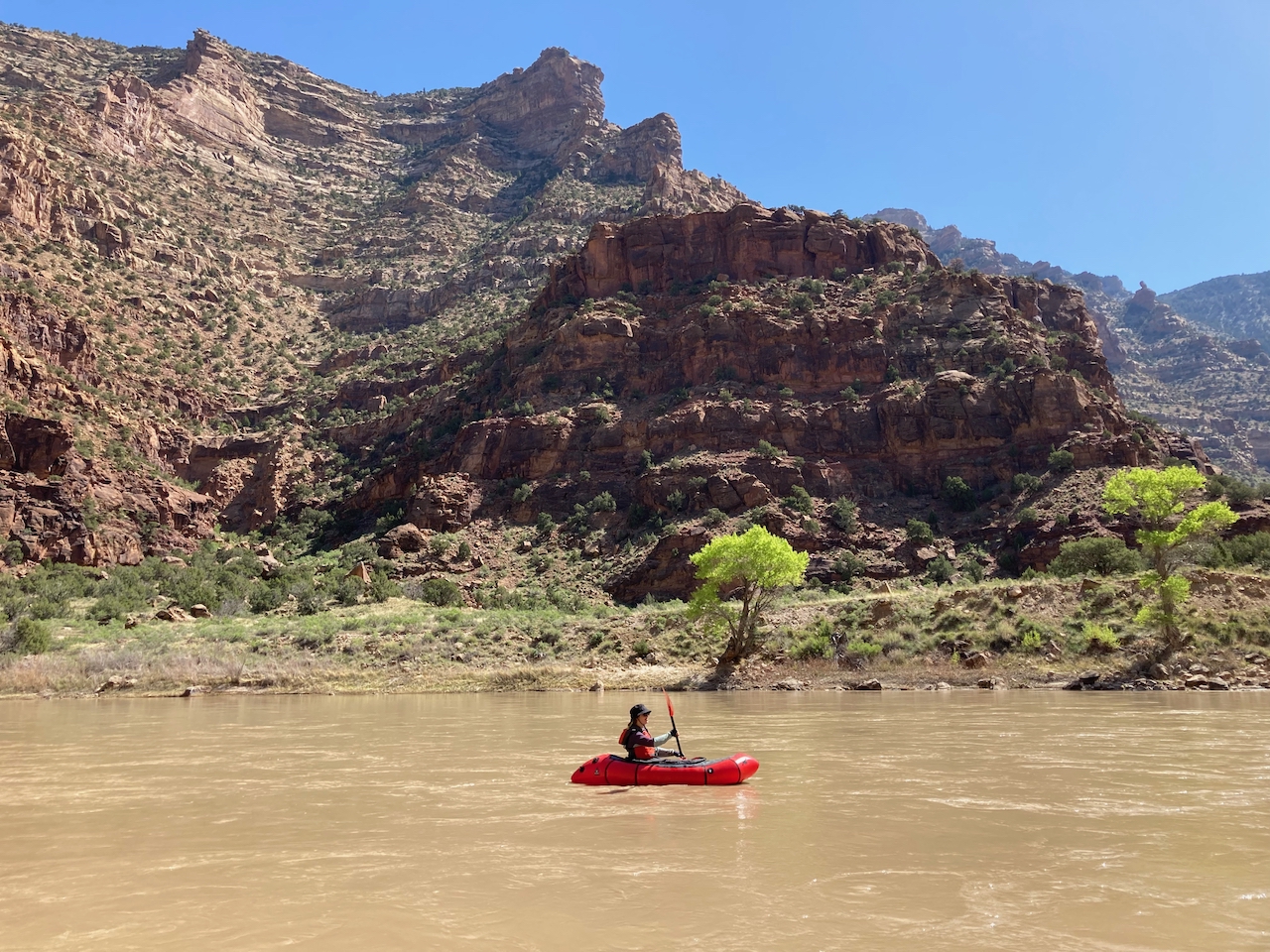Introduction
The Alpacka Refuge (5.5 lb / 2.5 kg, MSRP $1,275) is an ultralight, landscape traverse packraft that marks a return to the company’s roots.
The Alpacka Raft Refuge is a perfected version of the earliest packrafts. The first boats were designed for the Wilderness Classic adventure race and traverses of the Brooks Range in northern Alaska. The Refuge is the boat that those earliest packrafters wished they had. It has a whitewater deck to repel cold Alaskan snowmelt, a cargo fly to keep the center of gravity low, and despite those features, it still only weighs 5.5 pounds (2.5 kg), allowing it to not feel burdensome when you’re carrying it over high mountain passes and in which experienced paddlers can tackle up to Class III water.

Table of Contents
Table of Contents • Note: some sections may only be available to Premium or Unlimited Members.
- Introduction
- Table of Contents
- Highlights
- Review Context
- “The boat we all have been waiting for”
- Features
- Specifications
- Description of Field Testing
- Performance Assessment
- Commentary
- What’s the best use case for an Alpacka Raft Refuge?
- Issues of Note
- Compared To…
- Strengths
- Limitations
- Who Should Consider This Product
- Who Should Not Consider This Product
- Recommendations for Improvement
- Where to Buy
- Review Rating: Highly Recommended
- Related content
Highlights
- 5.5 pounds (2.5 kg) including all accessories: seat, backrest, coaming, and skirt
- class III capable
- hits the sweet spot between whitewater boats and Scout
- fits paddlers up to six feet two inches (188 cm) tall
- Alpaka Raft Classic Hull design
- good paddling performance – possible to get an edge
- super fun
Review Context
We recently published a review of the Alpacka Raft Scout which is essentially the platform on which the Refuge is built. I said it in that review, and I’ll say it again, these boats are the boats I have always wanted to believe were possible.
Sheri Tingey’s first packrafts were built to facilitate movement through landscapes, not as alpine fishing dinghies or whitewater shredders. They were made for the sort of adventurer who pores over maps, drawing lines based primarily on curiosity, not necessarily feasibility.
She initially designed them for use in the Alaskan backcountry, where the water is swift, and the distances between rivers are long and rugged, so her boats had to be light in the pack and nimble and stable on the water too. Alpacka describes the Refuge as “the dream boat for the old school packrafter… the ultimate landscape traverse packraft.” In other words, the Refuge marks a return to Alpacka’s roots.
Historically, I have been interested in this type of boat for use in a different landscape, but my intentions were largely the same. On the Colorado Plateau, where I have frequently packrafted, some rivers flow only with the spring runoff, so trips can be cold.
And like Alaska, the routes into and out of rivers are long and rugged. For these reasons, I’ve always wanted an ultralight boat with a whitewater deck. The Refuge could be that boat.

“The boat we all have been waiting for”
Last summer, Roman Dial posted a picture on Instagram of all his packrafts lined up in his yard, noting that one of them, his favorite boat, was missing from the photo. As per Alpacka’s request, he wouldn’t share a picture or give details, but he did give us a hint, saying, “it’s the boat we all have been waiting for.”
I knew right away what he meant. It was the boat that backcountry adventurers have been waiting for. A boat that will be light in the pack but perform admirably in cold weather and up to Class III whitewater. His statement was hyperbolic, no doubt, but he was still right. It was the boat many of us – including, I assume, a good percentage of the BPL community – have been waiting for.
The Refuge can be thought of as a shrunken and lighter Classic with a whitewater deck and cargo fly. It has 10-inch (25 cm) instead of 11.7-inch (30 cm) tubes. It has an extended stern, but, proportionally, it is not as long as the Classic’s.
To me, it appears to be proportionally about the same length as what I would call the “second generation” Classic, which ran from about 2010 to 2013. (The Classic was given an even longer stern in about 2014.) The Refuge also has an upturned bow, just like the Classic’s.
Features
- Classic hull
- 10-inch (25 cm) tube diameter
- Scout Seat, Back Rest, Whitewater Deck, Cargo Fly, PEX Coaming, and Whitewater Skirt included
- 4 bow grab loops, 2 stern grab loops, 2 strap plates, and 1 seat toggle
- additional attachments available through Alpacka Raft’s Custom Lab (the company is not yet offering thigh straps for this boat)
- temper assist valve for inflation and deflation
- includes inflation bag, stuff sack, and basic repair kit (not included in weight)
Specifications
- exterior length: 86.25 in (219 cm)
- exterior width: 34.25 in (87 cm)
- interior length: 46.25 in (117 cm)
- interior width: 14.25 in (36 cm)
- advertised weight including all accessories: 88 oz (2.5 kg)
- actual weight including all accessories: 93 oz (2.64 kg)
- advertised weight stripped: 75 oz (2.13 kg)
- actual weight stripped: 73.4 oz (2.08 kg)
- packed size: 15 x 7 in (38 x 18cm)
- max capacity: 250 pounds (113.39 kg)
- hull material: proprietary lightweight 210-denier high count nylon
- floor material: 420-denier nylon
Description of Field Testing
I took the Alpacka Raft Refuge on two trips that were ideal for testing this boat’s capabilities. In early April, my partner Hallie and I, along with a group of friends, packrafted from the Honaker trail to Grand Gulch on the San Juan River in far southeastern Utah. Hallie carried the boat in on the Honaker trail and out via Grand Gulch, but while paddling, we switched off every few miles so we could both get a feel for it.
Then my sister’s friend scored a permit for Desolation Canyon on the Green River, so in late April, we joined that big boat trip with packrafts in tow. I didn’t paddle the Refuge the entirety of this stretch of river, but did hit many Class II and some (possibly) Class III rapids with it.


Environmental Conditions
- San Juan River: Class I-II+
- Desolation Canyon: Class I-III
Daytime temperatures ranged from 50 to 80 °F (10 to 27 °C). There was sometimes strong wind and the water was cold in each of these cases. Because both the air and water temperatures were sometimes cold, I always wore a rain jacket when paddling to protect my upper body from the chill. On the bottom, I wore shorts and trail running shoes because the deck was protecting my legs from splash.
How Many User-Days?
- About 10
Performance Assessment
For this Alpacka Refuge packraft review, I measured performance based on the following criteria:
- hull design & shape
- fit & size
- paddling performance
- features
- weight
- durability
- packed size
- finish quality & aesthetics
- price
Hull design & shape
The Alpacka Raft Refuge utilizes the Classic Hull which is characterized by an extended stern and upturned bow. The extended stern is proportionally not quite as long as the Classic’s, and the tube size is smaller overall: 10 inches (25 cm) vs. 11.7 inches (30 cm).
I like to think about the Refuge as a shrunken second-generation Classic (which had an extended stern slightly shorter than today’s version).
Member Exclusive
A Premium or Unlimited Membership* is required to view the rest of this article.
* A Basic Membership is required to view Member Q&A events




Home › Forums › Alpacka Refuge Review